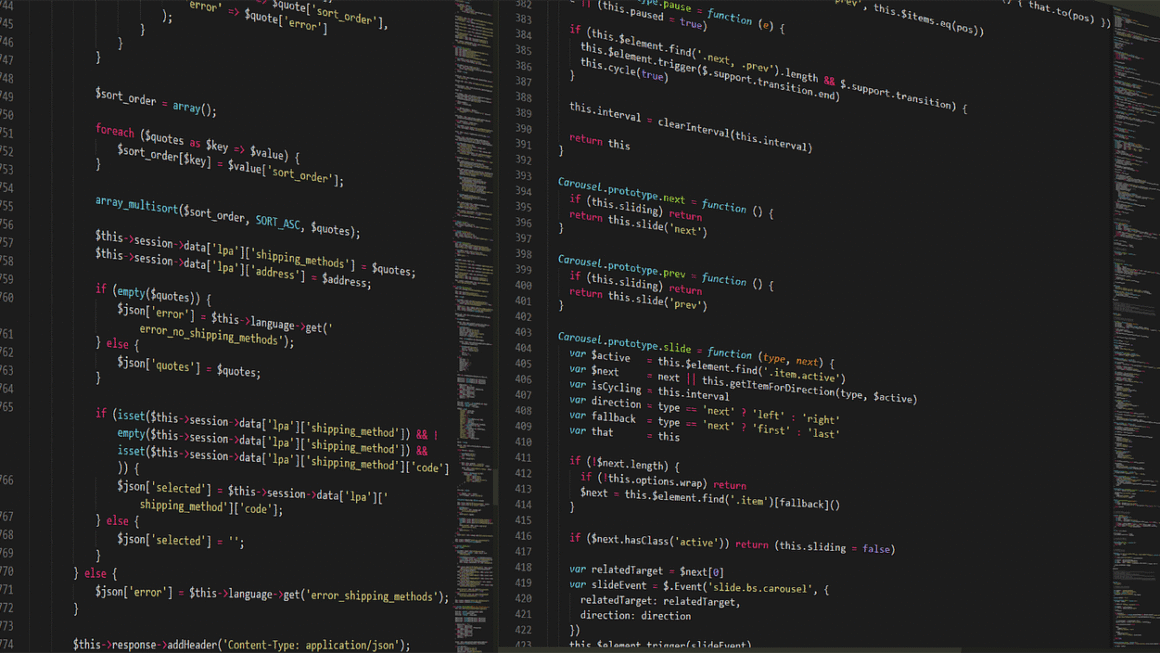Software development is the backbone of the digital world, powering everything from the smartphones in our pockets to the complex systems that run global businesses. It’s a constantly evolving field, demanding continuous learning and adaptation. This blog post dives deep into the core concepts of software development, exploring different methodologies, essential tools, and best practices to help you navigate this dynamic landscape. Whether you’re a seasoned developer or just starting your journey, this guide offers valuable insights to enhance your understanding and skills.
What is Software Development?
Defining Software Development
Software development is more than just writing code. It encompasses the entire lifecycle of creating and maintaining software applications. This includes:
- Gathering requirements from stakeholders
- Designing the software architecture
- Coding the application based on the design
- Testing to ensure quality and functionality
- Deploying the application to its intended environment
- Maintaining and updating the software over time
It’s a collaborative process that requires a blend of technical expertise, creativity, and strong communication skills.
The Software Development Lifecycle (SDLC)
The SDLC is a conceptual model that provides a structured approach to software development. Common SDLC models include:
- Waterfall: A sequential model where each phase must be completed before moving to the next. Example: Useful for projects with well-defined requirements and minimal changes.
- Agile: An iterative and incremental model focusing on flexibility and collaboration. Example: Ideal for projects with evolving requirements and a need for rapid feedback.
- Spiral: A risk-driven model that incorporates elements of both waterfall and iterative approaches. Example: Suited for complex projects with high risk factors.
Choosing the right SDLC model depends on the project’s specific needs and constraints. Agile methodologies, like Scrum and Kanban, are particularly popular due to their adaptability and focus on delivering value incrementally.
Importance of Understanding SDLC
Understanding the SDLC is crucial because:
- It provides a roadmap for the development process, ensuring all stages are completed.
- It allows for better planning, resource allocation, and risk management.
- It facilitates communication and collaboration among team members.
- It helps in delivering high-quality software that meets user requirements.
For instance, using Scrum, a common agile framework, the team works in short sprints, delivering a working increment of the software at the end of each sprint. This allows for continuous feedback and adjustments, leading to a product that better meets the user’s needs.
Popular Programming Languages
Front-End Development
Front-end development focuses on the user interface (UI) and user experience (UX) of a software application. Key languages include:
- HTML (HyperText Markup Language): The foundation of web pages, used to structure content.
Example: Defining headings, paragraphs, and images on a webpage.
- CSS (Cascading Style Sheets): Used to style the appearance of web pages, including colors, fonts, and layout.
Example: Changing the background color of a button or adjusting the font size of a heading.
- JavaScript: A scripting language that adds interactivity and dynamic behavior to web pages.
Example: Creating animations, handling user input, and making API calls.
- Frameworks like React, Angular, and Vue.js: Provide structure and tools for building complex user interfaces. React, for example, uses a component-based architecture, making it easier to manage and reuse UI elements.
Back-End Development
Back-end development deals with the server-side logic, databases, and APIs that power a software application. Popular languages include:
- Python: A versatile language used for web development, data science, and automation. Frameworks like Django and Flask simplify web application development.
- Java: A robust language commonly used for enterprise applications and Android development.
- Node.js: A JavaScript runtime environment that allows developers to use JavaScript on the server-side.
- PHP: A widely used language for web development, often used with content management systems like WordPress.
- Databases (SQL and NoSQL):
SQL is used for relational databases (e.g., MySQL, PostgreSQL). It provides a structured way to store and retrieve data.
* NoSQL databases (e.g., MongoDB, Cassandra) are more flexible and suitable for unstructured data.
Full-Stack Development
Full-stack developers have expertise in both front-end and back-end technologies, enabling them to work on all aspects of a software application. This comprehensive skill set is highly valued in the industry. Knowing both the front and back end allows for a deeper understanding of the entire system and can lead to more efficient problem-solving.
Essential Tools and Technologies
Integrated Development Environments (IDEs)
IDEs provide a comprehensive environment for software development, offering features like:
- Code editing with syntax highlighting and auto-completion.
- Debugging tools to identify and fix errors.
- Version control integration (e.g., Git).
- Build automation tools.
- Examples: Visual Studio Code, IntelliJ IDEA, Eclipse. Visual Studio Code, for instance, offers a wide range of extensions that can enhance its functionality for various programming languages and frameworks.
Version Control Systems (VCS)
VCS tools like Git are essential for managing changes to source code and collaborating with other developers. Key features include:
- Tracking changes to files over time.
- Branching and merging code to work on different features simultaneously.
- Reverting to previous versions if needed.
- Collaboration features for teams to work together effectively.
- Platforms like GitHub and GitLab provide hosting and collaboration tools for Git repositories.
Testing Frameworks
Testing frameworks help automate the process of testing software and ensuring its quality. Examples include:
- Unit testing frameworks: JUnit (Java), pytest (Python), Jest (JavaScript).
- Integration testing frameworks: Selenium, Cypress.
- Performance testing tools: JMeter, LoadRunner.
Cloud Computing Platforms
Cloud platforms like AWS, Azure, and Google Cloud provide scalable and cost-effective infrastructure for deploying and running software applications.
- AWS (Amazon Web Services): Offers a wide range of services, including compute, storage, databases, and machine learning.
- Azure (Microsoft Azure): Provides similar services to AWS, with a focus on enterprise applications.
- Google Cloud Platform (GCP): Known for its expertise in data analytics and machine learning.
Best Practices in Software Development
Code Quality and Readability
Writing clean, well-documented code is crucial for maintainability and collaboration. Best practices include:
- Following coding standards and style guides (e.g., PEP 8 for Python).
- Using meaningful variable and function names.
- Writing comments to explain complex logic.
- Keeping functions and methods short and focused.
- Applying the DRY (Don’t Repeat Yourself) principle to avoid code duplication.
Agile Development Methodologies
Agile methodologies like Scrum and Kanban promote iterative development, collaboration, and continuous improvement. Key practices include:
- Breaking down large projects into smaller, manageable tasks (user stories).
- Working in short sprints (typically 2-4 weeks).
- Holding daily stand-up meetings to track progress and identify roadblocks.
- Conducting sprint reviews and retrospectives to gather feedback and improve processes.
Security Considerations
Security should be a top priority throughout the software development lifecycle. Best practices include:
- Implementing secure coding practices to prevent vulnerabilities like SQL injection and cross-site scripting (XSS).
- Using secure authentication and authorization mechanisms.
- Regularly updating software to patch security vulnerabilities.
- Performing security testing and code reviews to identify potential weaknesses.
Continuous Integration and Continuous Deployment (CI/CD)
CI/CD automates the process of building, testing, and deploying software changes. Key benefits include:
- Faster release cycles.
- Reduced risk of errors.
- Improved collaboration.
- Automated testing ensures code quality.
- Tools like Jenkins, GitLab CI, and CircleCI can be used to implement CI/CD pipelines.
Conclusion
Software development is a complex but incredibly rewarding field. By understanding the fundamentals, mastering essential tools, and following best practices, you can create high-quality software that meets the needs of users and businesses. Embracing continuous learning and adapting to new technologies are key to success in this ever-evolving industry. Keep exploring, keep coding, and keep innovating!




